If you’re looking for a cost-effective and efficient way to handle wastewater on your property, a septic tank system is an excellent solution. One of the most popular septic tank sizes is the 300 gallon septic tank due to its affordability and versatility. Whether you have a small residential property or a vacation home, a 300 gallon septic tank can efficiently manage waste while reducing your environmental impact.
In this article, we’ll provide an overview of septic tank systems, including their installation and maintenance. We’ll also specifically discuss the benefits of choosing a 300 gallon septic tank, its efficiency, and cost savings. By the end of this guide, you’ll have all the information you need to make an informed decision about whether a 300 gallon septic tank is the right fit for your property.
Key Takeaways:
- A 300 gallon septic tank is a cost-effective and efficient way to manage waste on your property.
- Septic tank systems come in various sizes, and choosing the appropriate size depends on factors such as property size and daily water usage.
- Regular maintenance is crucial to ensuring the longevity and functionality of a septic tank system.
Understanding Septic Tank Systems
If you’re considering installing a septic tank, it’s essential to understand how the system works and how to properly maintain it for optimal performance. The installation process involves digging a hole in the ground and placing the tank inside. The tank is then connected to the property’s plumbing system, allowing wastewater to flow into the tank.
To ensure your septic tank system operates efficiently, it’s crucial to engage in regular maintenance. One crucial aspect of maintenance is regularly pumping the tank to prevent waste buildup. Most experts recommend pumping every three to five years, depending on the tank’s size and the number of occupants in the property.
Another essential maintenance step is water conservation. Excessive water usage can overload the system, leading to potential drainage issues. It’s crucial to fix any leaks or drips in your plumbing system and avoid excessive water usage, especially during peak hours.
| Tip: | Be mindful of what goes into the septic tank. Avoid flushing non-biodegradable items such as sanitary products, diapers, or wipes, as they can clog and damage the system. |
|---|
Remember, maintaining your septic tank system is crucial for its longevity and optimal functioning. Regular inspections by professionals can help detect any issues early on, saving you money in the long run.
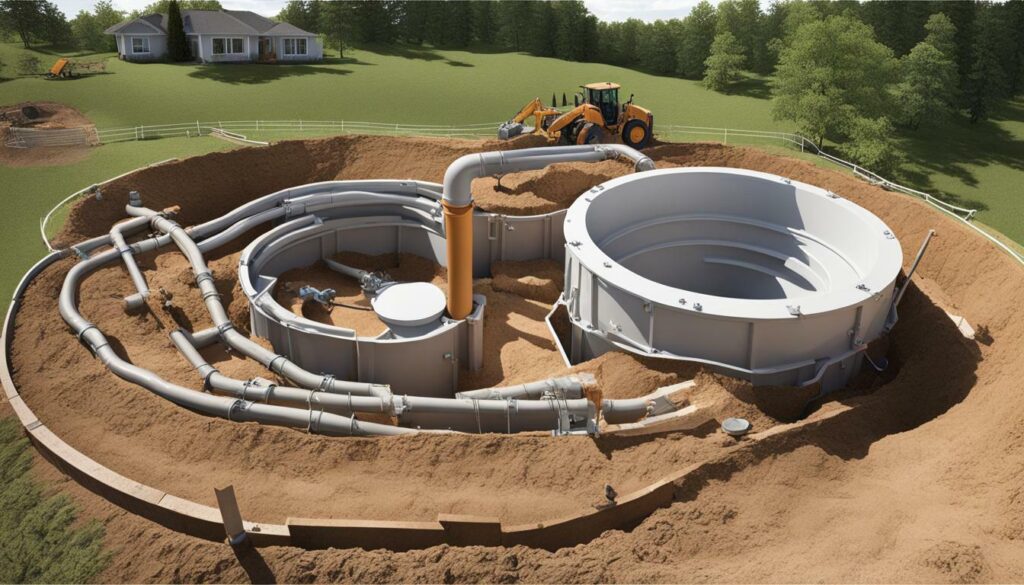
When it comes to septic tank installation, it’s vital to hire a professional to ensure it’s done correctly. The installation process involves digging and heavy machinery, making it unsafe and challenging for untrained individuals to do on their own. A professional installation team can ensure the tank is installed correctly, and all necessary connections to the plumbing system are made.
Now that you know the basics of septic tank systems and maintenance, you’re better equipped to ensure your septic tank system operates efficiently and to get the most out of your investment.
Benefits of 300 Gallon Septic Tanks
If you’re looking for an efficient and cost-effective solution for your septic tank system, a 300 gallon septic tank may be the perfect fit for you. These tanks are smaller in size but offer several benefits over larger tanks.
| Advantages | Description |
|---|---|
| Lower Cost | 300 gallon septic tanks are typically less expensive than larger tanks, making them a great option for those on a budget. |
| Reduced Maintenance | With a smaller tank size, there is less risk of overflow or drainage issues. This means you’ll spend less time and money on maintenance and repairs. |
| Availability | Many septic tank suppliers offer 300 gallon tanks, so finding one should be no problem. Plus, installation is generally easier and faster than with larger tanks. |
While larger tanks may seem like the logical choice, their higher upfront cost and maintenance requirements can quickly add up. A 300 gallon septic tank can provide efficient and long-lasting service at a fraction of the cost.
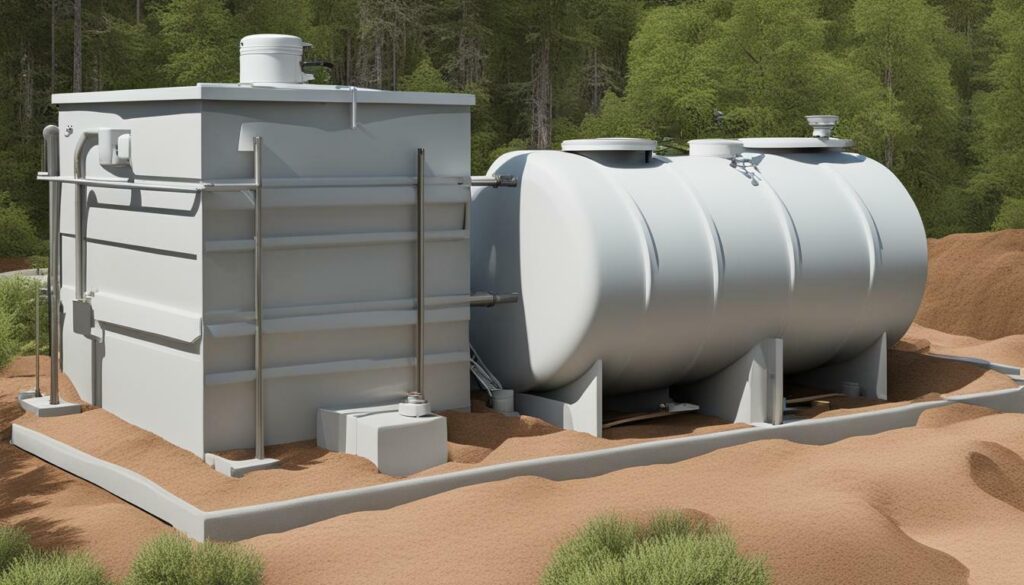
Efficiency of 300 Gallon Septic Tanks
If you’re looking for a cost-effective septic tank solution that can efficiently handle waste, a 300 gallon septic tank may be the perfect fit for your needs. These tanks are designed to work with smaller residential properties, effectively treating wastewater while reducing the likelihood of overflow or drainage issues.
One of the key advantages of a 300 gallon septic tank is its efficiency. These tanks are designed to process waste quickly and effectively, ensuring that your property’s wastewater is treated and disposed of properly. This means that you won’t have to worry about the unpleasant odors and potential health hazards associated with poorly functioning septic tank systems.
Another benefit of 300 gallon septic tanks is their effectiveness in smaller residential properties. These tanks are designed to work well with low water usage, making them ideal for smaller families or individuals who use less water on a daily basis. Additionally, the smaller size of these tanks means that they are easier to install and maintain, which can save you both time and money in the long run.
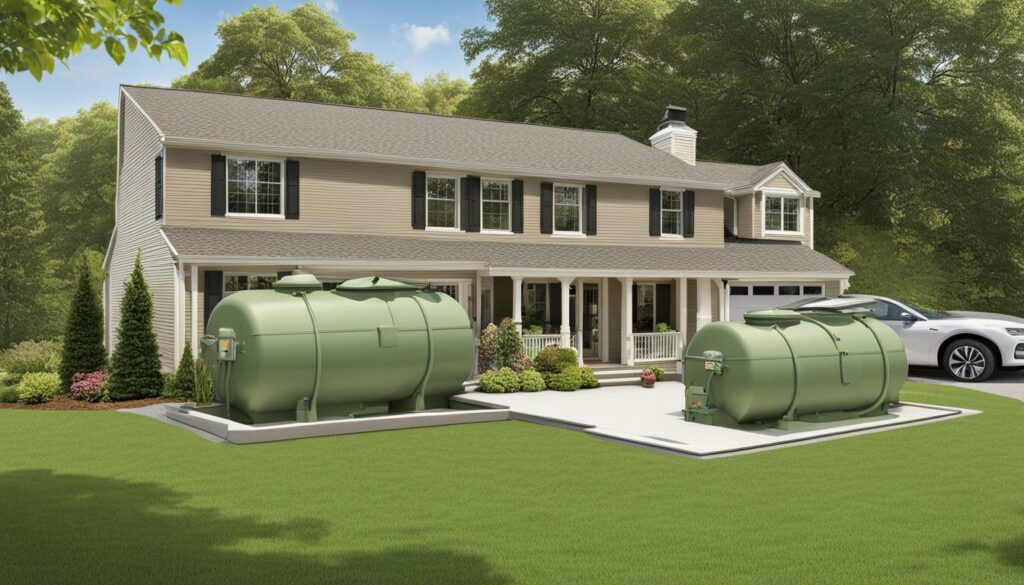
Overall, if you’re looking for an efficient and cost-effective septic tank solution for your residential property, a 300 gallon septic tank might be the best option for you. Not only are these tanks more affordable than larger sizes, but they are also designed to work well with smaller properties and lower water usage. With proper installation and maintenance, a 300 gallon septic tank can provide you with reliable and effective waste management for years to come.
Choosing the Right Size
When it comes to selecting the appropriate septic tank size for your property, it’s essential to take several factors into account. The number of occupants in your property and the daily water usage are two primary factors that can determine the size of the septic tank you need.
Septic tank systems are available in various sizes, ranging from 500 gallons to over 1,500 gallons. However, the 300-gallon septic tank is an excellent option for small households or properties.
Keep in mind that the size of your property also affects the septic tank size you need. Smaller properties may not require a larger tank, and a 300-gallon septic tank may be the ideal option.
Ultimately, the right size for your septic tank depends on several factors, including the number of occupants and the property size. Consulting with a professional installer can assist you in making the best decision for your needs.
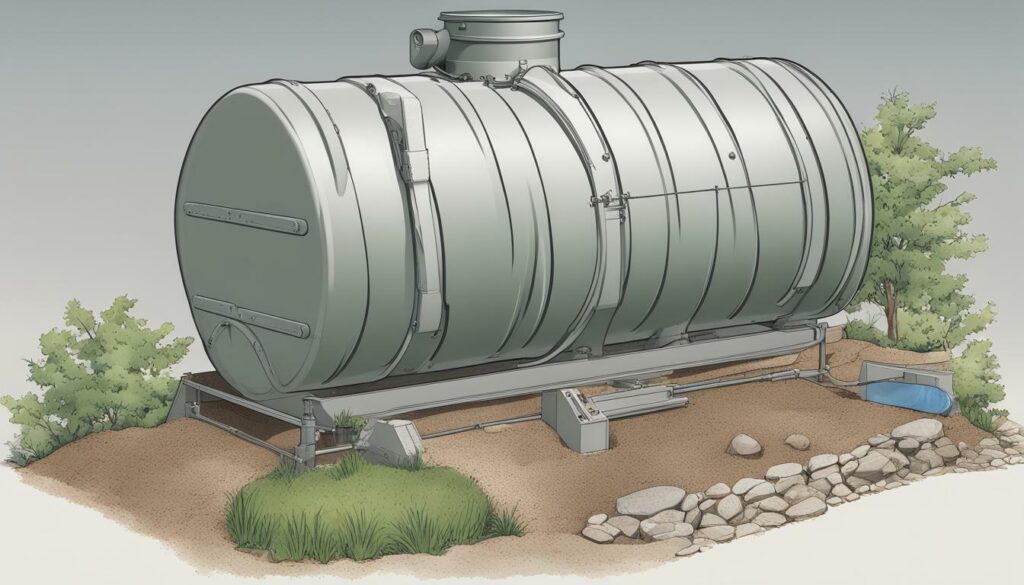
Installation Process of 300 Gallon Septic Tanks
When it comes to septic tank installation, it’s crucial to hire a professional to ensure proper functioning. This is especially true for 300 gallon septic tanks, which require an experienced installer to avoid any potential issues.
First, the installer will need to assess the soil conditions and determine the appropriate location for the tank based on regulations and local codes. Next, they will excavate the site and install the tank, making sure it is level and secure.
The inlet and outlet pipes will then be installed and connected to the plumbing system of the property. Once everything is in place, the installer will test the system to ensure it’s functioning properly.
It’s important to note that the installation process may vary depending on the specific property and location. Always consult with a professional septic tank installer to guarantee a successful installation.

Tip: Regular maintenance and pumping of your 300 gallon septic tank is crucial to prevent any issues and ensure optimal functioning.
Maintenance Tips for 300 Gallon Septic Tanks
Proper maintenance is vital in ensuring the optimal functionality and efficiency of your 300 gallon septic tank. By following these simple maintenance tips, you can save on costly repairs and prolong the lifespan of your tank.
Regular pumping: Your 300 gallon septic tank should be pumped every two to three years. This frequency may vary depending on your household’s size and water usage. Regular pumping prevents solids from accumulating, which can cause blockages and overflow issues.
Water usage: To avoid excessive water usage, fix any leaks or running toilets immediately. Be mindful of your daily water usage and avoid overloading the tank with large amounts of water at once.
Be mindful of what goes into the septic tank: Keep in mind that certain items, such as feminine hygiene products, wipes, and cooking grease, should not be flushed down the toilet or sink. These items can cause blockages and clog your septic system. Instead, dispose of them in the trash.
Inspections: Regular inspections by a professional can identify any issues early on and prevent costly repairs down the line. Inspect your septic tank system regularly for any signs of issues, such as unpleasant odors or slow drainage.

By following these simple maintenance tips, you can ensure the longevity and optimal functioning of your 300 gallon septic tank system.
Cost Considerations of 300 Gallon Septic Tanks
Investing in a 300 gallon septic tank can be a cost-effective solution for your property’s waste management needs. While larger septic tanks may seem like a better investment, they come with a higher upfront cost and may not be necessary for smaller properties.
The cost of a 300 gallon septic tank can vary depending on several factors, such as location, supplier, and installation fees. On average, the cost of a 300 gallon septic tank ranges from $1,000 to $2,500.
However, it’s essential to consider the potential long-term savings that come with a smaller septic tank. Smaller septic tanks require less water to function, reducing your overall water usage and potentially lowering your water bills. Additionally, the cost of regular maintenance and pumping for a smaller septic tank is typically less expensive than larger tanks.
| Septic Tank Size | Upfront Cost | Long-Term Cost (Maintenance + Pumping) |
|---|---|---|
| 300 gallons | $1,000 – $2,500 | $200 – $400 per year |
| 500 gallons | $2,000 – $3,500 | $250 – $500 per year |
| 1,000 gallons | $3,000 – $5,000 | $300 – $600 per year |
When considering the cost of a 300 gallon septic tank, it’s essential to work with a reputable supplier and contractor. Although it may be tempting to choose a supplier based on the lowest price, a low-quality septic tank system can result in costly repairs and replacements in the future.
Keep in mind that additional factors can impact the overall cost of a septic tank, such as the need for permits, excavation, and repairs to the drain field. However, by carefully weighing the cost considerations and potential savings, a 300 gallon septic tank can be a wise investment for your property’s waste management needs.
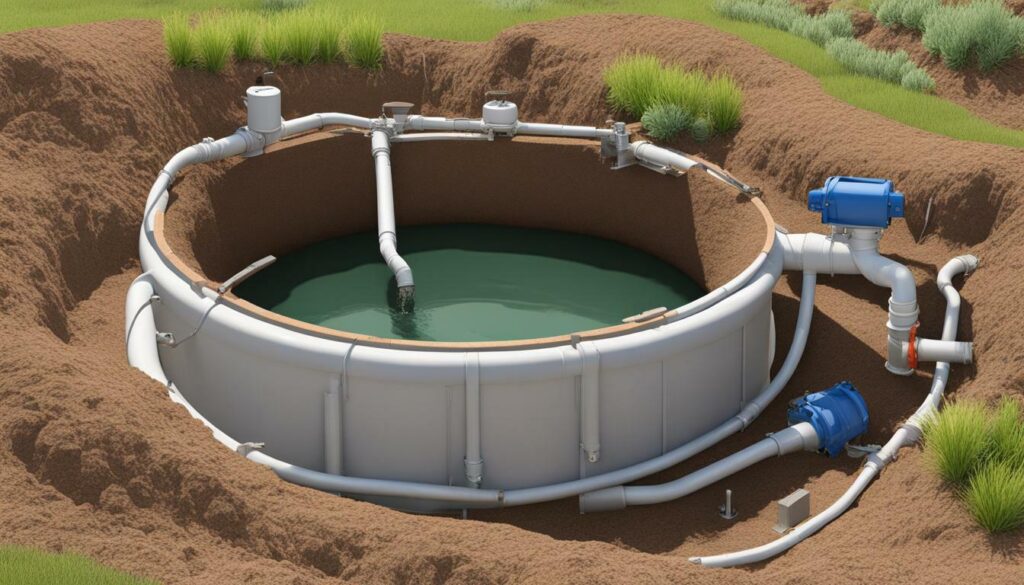
Finding Reliable Suppliers
When it comes to septic tank systems, finding a reliable supplier is crucial. Choosing the right supplier can ensure that you get a quality 300 gallon septic tank that meets all your needs.
So, how do you find a reputable supplier for your 300 gallon septic tank? The first step is to do your research. Look for companies that have experience in providing septic tank systems and have a good reputation in the market.
You can also ask for recommendations from people you trust, such as friends, family, or local contractors. They may be able to recommend a reliable supplier based on their own experiences.
When you have a list of potential suppliers, take the time to visit their websites and read reviews from their previous customers. Look for any red flags, such as poor customer service or consistently negative reviews.
Once you have narrowed down your list, contact each supplier and ask for a quote. Be sure to ask about any warranties they offer and their installation process. It’s essential to have a clear understanding of all the costs involved and what is included in the price.
Remember, choosing a reliable supplier for your 300 gallon septic tank is essential for the long-term efficiency and functionality of your septic tank system. Take the time to do your research and make an informed decision.

Environmental Benefits of 300 Gallon Septic Tanks
Choosing a 300 gallon septic tank is not only cost-effective, but it is also an environmentally friendly option for managing wastewater. Septic tank systems are an essential component in ensuring a clean and safe environment for both humans and wildlife. The use of smaller septic tank systems, such as the 300 gallon tank, can further reduce the environmental impact.
Unlike conventional sewer systems, septic tank systems are self-contained and do not require extensive pipelines for water to be treated and reused. Instead, the system treats wastewater in a contained unit, effectively filtering pollutants from the water before releasing it back into the ground. This not only reduces the amount of pollution in our water sources but also conserves water resources.
The use of 300 gallon septic tanks in smaller residential properties is particularly advantageous for the environment. These tanks can effectively handle the wastewater produced by a small number of occupants, reducing the amount of water that needs to be treated and reused. Additionally, by treating wastewater on-site, septic tank systems prevent the need for large wastewater treatment plants, which can have a significant environmental impact.
Overall, choosing a 300 gallon septic tank is not only a cost-effective and practical solution for managing wastewater, but also a responsible choice for the environment. By reducing the environmental impact of wastewater management, we can help to protect our natural resources and preserve the environment for future generations.
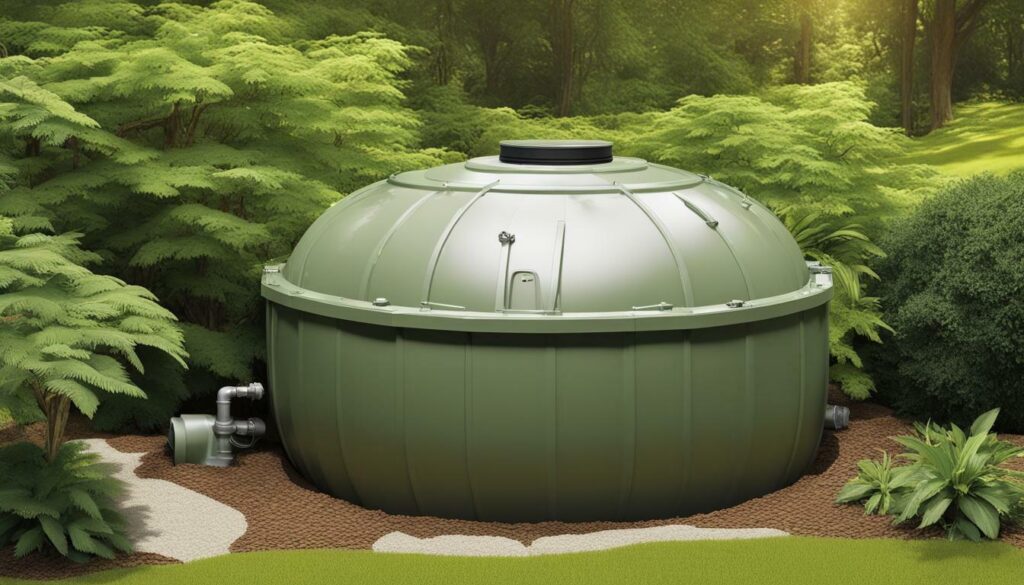
Longevity and Durability
Just like any other septic tank system, proper maintenance is crucial to ensure longevity and durability of your 300 gallon septic tank. Regular inspections and pumping will help keep the system functioning efficiently. It is also important to avoid overloading the tank with excessive water usage and being mindful of what goes into the septic tank.
With regular maintenance, the average lifespan of a 300 gallon septic tank ranges from 25 to 40 years. However, factors such as soil conditions, weather, and quality of installation can impact the tank’s lifespan. Professionals recommend getting your septic tank inspected every three to five years to catch any issues early and prevent costly repairs.
With proper care, your 300 gallon septic tank can function efficiently for decades. Investing in regular maintenance and inspections will save you the headache and expense of repairs and replacements in the long run.
Remember, the key to longevity and durability is maintenance. Taking care of your 300 gallon septic tank will ensure optimal functionality and environmental benefits for years to come.
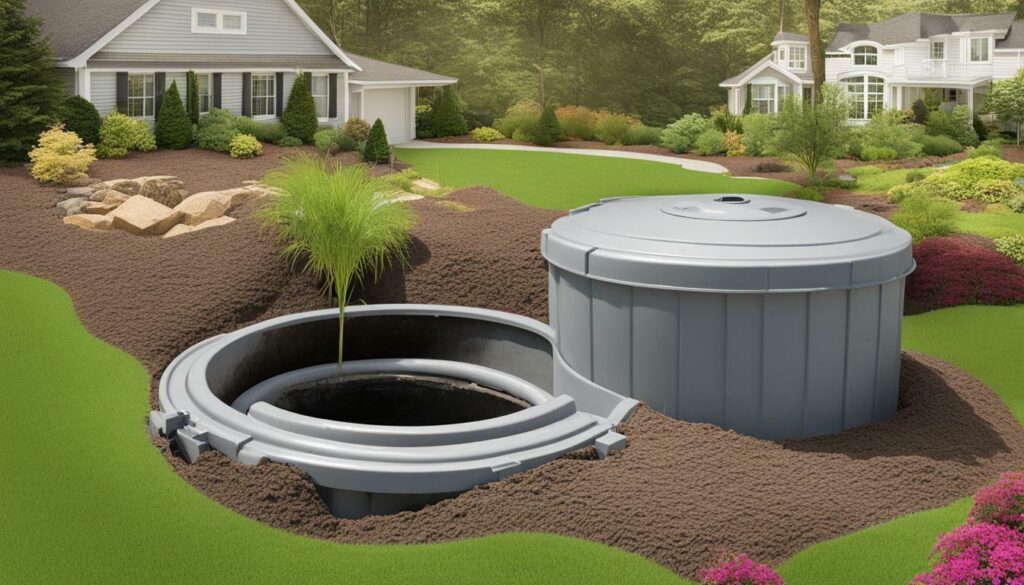
Conclusion
Choosing the right septic tank system is essential for proper waste management, and a 300 gallon septic tank can provide you with efficient and cost-effective solutions. These tanks can handle waste effectively, making them ideal for small residential properties. Choosing the right size, finding reliable suppliers, and proper installation and maintenance are crucial for longevity and durability.
With regular maintenance, a 300 gallon septic tank can last for years while effectively treating wastewater. Moreover, it is an eco-friendly option that reduces the environmental impact of sewage treatment compared to conventional sewer systems.
In conclusion, opting for a 300 gallon septic tank system is a sustainable way to manage your property’s waste. With their efficiency and cost-effective features, they can provide you with a worry-free solution to your waste management needs.
FAQ
Q: What is the capacity of a 300 gallon septic tank?
A: A 300 gallon septic tank has a capacity of 300 gallons, which is suitable for small residential properties.
Q: How often should a 300 gallon septic tank be pumped?
A: It is recommended to pump a 300 gallon septic tank every 3 to 5 years, depending on the usage and number of occupants in the property.
Q: Can a 300 gallon septic tank handle the waste from a large family?
A: A 300 gallon septic tank is more suitable for small to medium-sized families. If you have a large family, you may need to consider a larger tank size to handle the increased waste volume.
Q: How much does a 300 gallon septic tank cost?
A: The cost of a 300 gallon septic tank can vary depending on factors such as location and supplier. On average, you can expect to pay around $500 to $1,000 for a 300 gallon septic tank.
Q: Are there any specific maintenance requirements for a 300 gallon septic tank?
A: Like any septic tank, a 300 gallon septic tank requires regular maintenance. This includes pumping every few years, avoiding excessive water usage, and being cautious about what goes into the tank to prevent clogs.
Q: Can a 300 gallon septic tank be installed by a homeowner?
A: It is recommended to have a professional handle the installation of a 300 gallon septic tank to ensure proper placement and functionality. Septic tank installation requires knowledge of local regulations and proper excavation techniques.
Q: How long does a 300 gallon septic tank typically last?
A: With proper maintenance and regular inspections, a 300 gallon septic tank can last for several decades. However, the lifespan can vary depending on factors such as usage and maintenance practices.
Q: Are there any environmental benefits to using a 300 gallon septic tank?
A: Yes, choosing a 300 gallon septic tank can have environmental benefits. These tanks efficiently treat wastewater on-site, reducing the reliance on conventional sewer systems and minimizing the environmental impact.
Q: Where can I find reliable suppliers for a 300 gallon septic tank?
A: To find reliable suppliers for a 300 gallon septic tank, consider researching local septic tank companies or contacting your local health department for recommendations. It is important to work with reputable suppliers to ensure the quality and durability of the septic tank.
Q: Can a 300 gallon septic tank be used for commercial properties?
A: A 300 gallon septic tank is typically designed for residential properties. For commercial properties with higher waste volume, a larger septic tank may be required to accommodate the increased usage.
